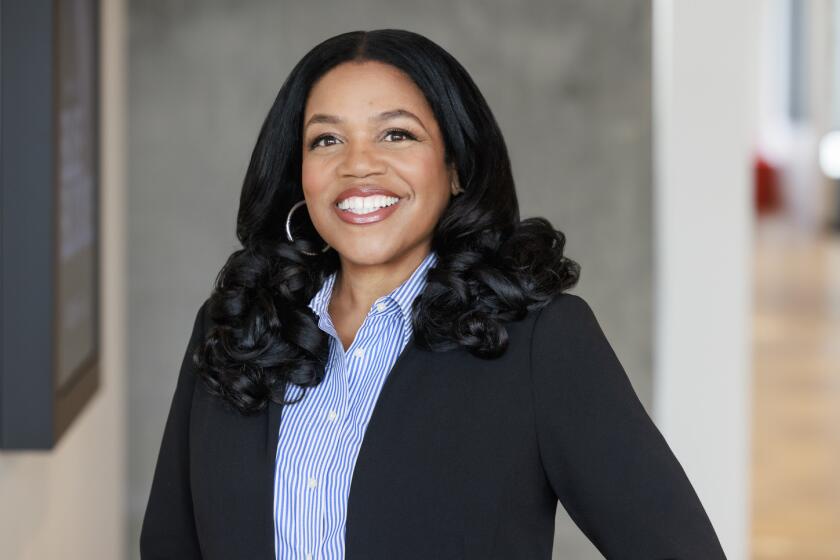Rehab television shows: intervention or exploitation?
Leif Garrett didn’t want to go to rehab — or at least not “Celebrity Rehab.”
“I didn’t want to have a camera stuck in my face while I was trying to kick,” said Garrett, the 1970s teen idol once as famous for his singing and acting as his sun-kissed mane of blond hair. “I thought, ‘It’s nobody’s freaking business.’ But I finally came to the realization: It’s everybody’s business, because it’s been in the papers. Instead of paying to go to rehab, why not get paid for it? And show the world, at the same time, that I am no longer using?”
Garrett, now 49, struggled with substance abuse from a young age. But his troubles escalated last February, when he was arrested on suspicion of possessing black tar heroin, according to police. His booking photograph soon appeared in tabloids and on the Internet. (In October, he was ordered to enter a drug rehab program that will not be part of any reality show.)
After the arrest, he was approached numerous times by VH1, the network that produces the reality show “Celebrity Rehab “With Dr. Drew,” to see if he might consider joining a cast comprising mostly of B-list actors and reality television stars at a Pasadena rehabilitation center run by Dr. Drew Pinsky. There, members of the group would be forced to tackle his or her addictions —- pain pills, alcohol, marijuana, even love — while a camera crew documented the emotional journey.
Being a part of “Celebrity Rehab,” Garrett concluded, was the best shot he had at regaining sobriety and his reputation. Most of the cast members on the fourth season of the show — which includes actor Eric Roberts and Tiger Woods’ alleged mistress Rachel Uchitel — said a similar line of thinking propelled them to participate: What do I have to lose?
But some professionals in the rehab field worry that programs about addiction — a genre that also includes HBO’s documentary series “Addiction” and A&E’s popular “Intervention,” now in its 10th season — are exploiting patients in their most vulnerable moments. Sure, participants are getting free treatment, but there’s also a concern that cameras interfere with the process.
VH1 says “Celebrity Rehab” is designed to help people, but good television also requires intense drama. And since many of the participants are celebrities hoping to rescue their image, playing to the camera may distract them from focusing fully on therapy.
“People who are sharing the most intimate details of their life are going to change the way they relate to their therapist on camera,” said Dr. David Sack, the chief executive of Malibu’s Promises Treatment Center. “It becomes a performance — not treatment.”
“Intervention,” meanwhile, centers on noncelebrity addicts. The show, which has become one of A&E’s most successful programs since its inception in 2005, trails those in particularly dire situations — in one episode, a man who is a crystal methamphetamine addict is also shown snorting OxyContin and is described as having snorted up to 40 of the pills a day.
The subjects are told they are being filmed for a TV documentary, but unlike “Celebrity Rehab” patients, they are not paid to participate. What they don’t know is that friends and family are secretly planning an intervention, during which they are asked to go to treatment. If they agree, A&E finds rehabilitation centers that will cover the bill for a minimum 90-day stay for the patient.
The appeal of both programs relies at least partly in voyeurism. On “Celebrity Rehab,” cameras trail the cast members to therapy sessions. They capture the fights that inevitably transpire between addicts and often catch patients vomiting or writhing in pain from withdrawal.
In this season’s opening episode, Janice Dickinson, a former supermodel and reality TV star, had been weaned off of benzodiazepines, which resulted in a massive panic attack. Sobbing to one of the hospital’s staff members, she revealed she was contemplating going to the bathroom to hang herself. The moment was teased endlessly in previews leading to the premiere.
It’s exactly the kind of moment that Sack says those who sign up for the show don’t realize might later haunt them.
“Our concern is that people who are in the throes of an addiction should not be signing a release for something that will be shown on TV over and over,” he explained. Most reality television shows, he explained, require subjects to sign an irrevocable release contract which states that all footage filmed of them may be used on air, even if they change their mind midway.
Garrett, for one, insisted he was not “coerced” into signing a contract to appear on “Celebrity Rehab.” “I was a functioning addict,” he explained. “I’d made many decisions in business meetings outside of doing this show.”
Still, he said that a couple of weeks before entering the Pasadena Recovery Center, he attempted to get a head start on his sobriety and was four days clean when VH1 producers approached him with a request. “They asked to get some footage of me using, and I said, ‘I haven’t been using,’” he recalled. “They said, ‘We really have to get footage of you using.’ Anyway, I was easily talked into showing them.”
“The show’s producers would never ask anyone to use...PERIOD,” said Scott Acord, vice president of VH1 Communications, in an e-mail.
Pinsky, a board-certified internist, addiction medicine specialist and television and radio personality who hosts “Celebrity Rehab,” declined to participate in this story. But Jeff Olde, VH1’s executive vice president of original programming and production, defended the ethics of “Celebrity Rehab.”
“You’re dealing with addicts first and foremost, so whatever it takes to get them into treatment — treatment is a good place,” said Olde. “I feel very comfortable saying we’re a show that actually helps people.”
Indeed, a number of those who graduated from the rehab program featured this season said they are celebrating nearly half a year of sobriety.
Dickinson put it plainly: “Dr. Drew saved my life.”
“I needed to get some help kicking these prescription meds — Ambien and Xanax — and the show went along for the ride,” Dickinson said. She is comforted that her struggle is “helping millions of women watch the transformation.”
It’s unclear, however, what effect “Celebrity Rehab” has on its audience, which has dropped about 37% from Season 1, when the program averaged 1.65 million viewers per episode, according to Nielsen.
Despite the decline, the show remains a pop culture touchstone. Watching other people’s addictions is addictive — especially when those people thrive on attention and will go to extreme lengths to get it. Even some in the industry, like filmmaker Judd Apatow, have been sucked into the phenomenon. “Why bother writing when nothing I write will ever be as good as Celebrity Rehab?” he wrote on his Twitter page in December. “I need a drug habit so I can get life help from Dr. Drew.”
Pinsky himself is a polarizing figure. He recently signed on to host his own prime-time show on HLN and has been lauded as an example of “TV giving itself a moral center.”
But some industry figures, like Promises’ Sack, question whether Pinsky’s attraction to the spotlight could cloud his good intentions. “It’s not that Dr. Pinsky doesn’t know how to treat people. It’s that when you create this context of paying people to participate, it doesn’t work,” argued Sack.
Garrett said that before “Celebrity Rehab,” he too questioned how “legit” Pinsky was but now believes he’s “100% the real deal.”
Other “Celebrity Rehab” alum, like actor Jeff Conaway, have more mixed feelings about the show.
Conaway, best known for his roles in the movie “Grease” and the sitcom “Taxi,” was an imposing presence on the show’s first season. After undergoing back surgery, Conaway said he developed an addiction to cocaine and pain pills, and as he attempted to quit those drugs on the program, he threw tantrums, shouted and blacked out.
He now says he ramped up his antics for the cameras.
“We all knew we were on TV. I think everybody, like myself, made choices. Sometimes we would go a little bit further than maybe we normally would,” said the actor, who also appeared on the program’s second season. “You can’t help it. There are cameras sitting in front of your face, and we’re paid to be dramatic. That’s what we do.”
Conaway said the show’s producers frequently requested he “give them drama.” He played along, until the end of the first season.
“I was in so much pain, I thought, ‘When I get out of here, I’m going back on pain pills,’” he said. Show executives urged him to stay on the program. “The producer said, ‘Can’t you just lie? Can’t you just not talk?’” he recalled. “I don’t think producers ever have actors’ best interest at heart. Their first allegiance is to the show.”
VH1’s Acord said that if “producers asked him to stay, they wanted him to continue to work on his sobriety for as long as possible.”
Dan Partland, executive producer of “Intervention,” said he understands why viewers are intrigued by “Celebrity Rehab” but ultimately feels “the conceit of the show is counterproductive to the ultimate outcome of the clients.”
“You put the audience in the uncomfortable position of perversely hoping for failure, because those are the most dramatic moments,” he said.
“Intervention” also has its critics, who charge that misleading addicts into an intervention is unethical.
“Listen, any time you’re bringing cameras in the real world and aiming at disempowered people, exploitation is gonna come up. But we’re very careful to only pursue stories where people are really interested in participating,” Partland insisted.
He acknowledged there have been a few instances where recovering addicts have been embarrassed by their behavior on “Intervention,” and in those cases, individual episodes have been retired.
More commonly, though, Partland and VH1’s Olde said, these series serve as an incentive to stay clean. “We’re finding that having the cameras there in the process is almost like an added element in their desire to stay sober,” Olde said.
Olde said everyone who goes on “Celebrity Rehab” is urged to enter sober living after the 21-day program ends and that Pinsky remains in close contact with many of his former patients. “You see these flawed humans in a lifeboat, and I think there’s something universal there, like you want to see them win,” said Olde.
Conaway, who suffered a setback last January when he fell and broke his hip and arm, fractured his neck and had a brain hemorrhage, said support from those who’ve watched his journey is one of the few things that propels him forward.
“I got a lot of love from people, and when people stop me on the street and say, ‘Man, your story touched me so much,’ it just makes all this pain worthwhile, you know?” he said, beginning to weep. “Because I don’t know where actors go after they die, but I know people who help other people have a nice place to go. And I would like to go there if I can.”
The complete guide to home viewing
Get Screen Gab for everything about the TV shows and streaming movies everyone’s talking about.
You may occasionally receive promotional content from the Los Angeles Times.




